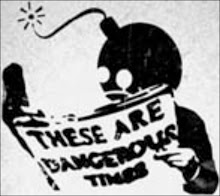Pictures from Port-au-Prince show some of the damage caused to the capital
A 7.0-magnitude quake which hit south of the Haitian capital Port-au-Prince is feared to have killed hundreds of people across the Caribbean country.
In the space of a minute, Haiti's worst quake in two centuries wrecked the HQ of the UN mission, Haiti's national palace and numerous other buildings. A "large number" of UN personnel were reported missing by the organisation.
Describing it as a "catastrophe", Haiti's envoy to the US said the cost of the damage could run into billions.
The tremor hit at 1653 (2153 GMT), the US Geological Survey said. Phone lines to the country failed shortly afterwards.
Aid workers and reporters at the scene estimated the number of dead to be in the hundreds or even thousands.
Vehicles ferrying the injured to hospital were hampered by rubble blocking the capital's streets.
Rachmani Domersant operations manager, Food for the Poor |
As night fell, Rachmani Domersant, an operations manager with the Food for the Poor charity, told Reuters: "The whole city is in darkness.
"You have thousands of people sitting in the streets with nowhere to go. There are people running, crying, screaming."
Adding that he had seen no rescue vehicles in the hillside suburb of Petionville, he said: "People are trying to dig victims out with flashlights.
"I think hundreds of casualties would be a serious understatement."
As the poorest country in the western hemisphere, Haiti is likely to need international aid in order to cope with the quake's impact, the BBC's Nick Davies reports from neighbouring Jamaica.
'Three million affected'
In a statement issued in New York, the UN said that its local HQ in Haiti had "sustained serious damage along with other UN installations" and "a large number" of personnel were missing.
EYEWITNESS Carel Pedre, TV and radio presenter, Port-au-Prince I saw a lot of people crying for help, a lot of buildings collapsed, a lot of car damage, a lot of people without help, people bleeding. I saw a movie theatre, a supermarket, a cybercafe, an apartment building which collapsed. Now it's dark outside, there is no electricity, all the phone networks are down, so there's no way that people can get in touch with their family and friends. There are aftershocks every 15 to 20 minutes. They last from three to five seconds. The first shock was really strong, people were falling in the streets and buildings collapsed. I didn't see any emergency services, the people at the neighbourhood were trying to help each other. The streets are narrow and there is lot of traffic and everyone is trying to reach family and friends. Traffic now is really difficult. People don't know where to go or where to start. |
The UN's stabilisation mission plays a vital role in ensuring security in Haiti.
Raymond Joseph, Haiti's ambassador to the US, said the presidential palace, the tax office, the ministry of commerce and the foreign ministry had all been damaged, but the airport was intact.
He and Haiti's ambassador to Mexico, Robert Manuel, both said that President Rene Preval and his wife had survived the quake.
The World Bank, which said its local offices were destroyed but that most staff were accounted for, planned to send a team to help Haiti assess damage and plan a recovery, Reuters reported.
Mike Blanpied of the US Geological Survey said that, based on the location and size of the quake, about three million people would have been severely shaken by its impact.
"This quake occurred under land as opposed to off-shore, so a lot of people were directly exposed to the shaking coming off that earthquake fault, which was quite shallow," he told the BBC.
US President Barack Obama said in a statement that his "thoughts and prayers" were with the people of Haiti and America stood ready to assist them.
'Rubble and wire'
In the minutes after the quake, Henry Bahn, a visiting official from the US Department of Agriculture, said he had seen houses which had tumbled into a ravine.
HAITI COUNTRY PROFILE Half of Caribbean island of Hispaniola History of violence, instability and dictatorship Population of 10 million people Most live on less than $2 a day Democratic rule restored in 2006 Economy in ruins and unemployment is chronic UN peacekeepers deployed - foreign aid seen as vital Massive deforestation has left just 2% forest |
He said he had been walking to his hotel room when the ground began to shake.
"I just held on and bounced across the wall," he said.
"I just hear a tremendous amount of noise and shouting and screaming in the distance."
He said rocks were strewn all over the place, and the ravine was "just full of collapsed walls and rubble and barbed wire".
BBC News website readers in the Dominican Republic, which borders Haiti on the island of Hispaniola, said they had also felt the quake.
"My family is on the 8th floor of a tower in downtown Santo Domingo," wrote Max Levine.
"We felt a swaying of the building for 5-10 seconds. All the lamps were swinging. There was a 20-second pause and then another similar sway. We rushed out of the building with many others to the street."
In the immediate aftermath of the quake, a tsunami watch was put out for Haiti, Cuba and the Bahamas, but this was later lifted.









No comments:
Post a Comment